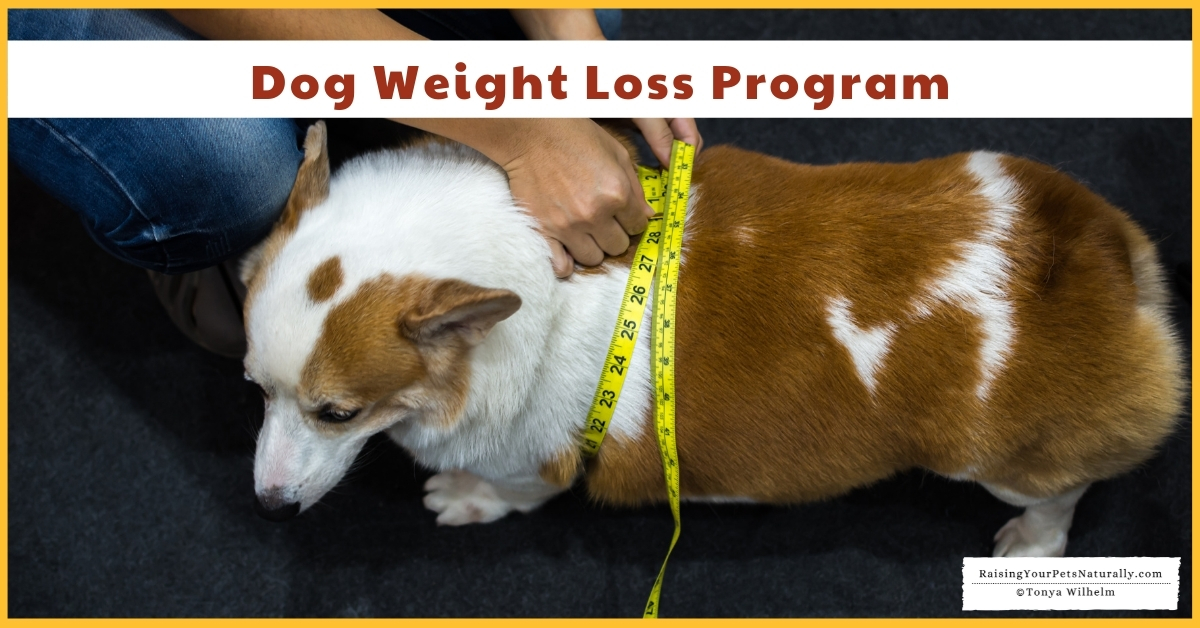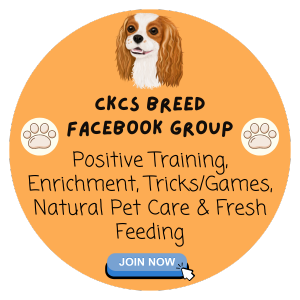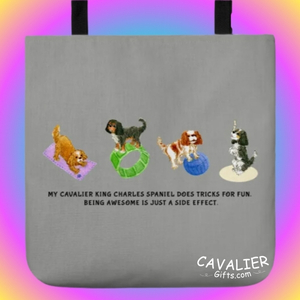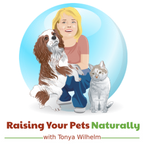Google Adsense—>

Pet Weight Loss Program, Food and Exercise

Have you laughed at chubby dogs on social media? Or even videos of fat or obese dogs and thought, how cute? I sure hope not! Obese pets are not funny. Overweight dogs are at a higher risk of type 2 diabetes, joint problems, skin sores, decreased activity, and heart disease. That’s not something to laugh at.
If your dog is overweight, speak with his holistic veterinarian before starting his dog weight-loss journey. You will want to ensure he does not have any underlying medical conditions such as hypothyroidism, Cushing’s disease, or parasites. If he’s on any medications, that, too, can contribute to weight gain.
Your dog’s holistic vet will also perform a physical exam evaluating his muscle mass, mobility, and strength. A vet who specializes in physical therapy is a wonderful addition to your dog’s weight-loss program.
Although, Dexter is at his ideal weight, his veterinarian physical therapist has been our biggest asset to monitoring Dexter’s body condition and demonstrating proper exercises for him and his physical condition. No, she is not local to us, but she and her team have been worth every penny and hour.
I spoke with a few veterinarians regarding healthy and safe weight-loss and exercise programs for dogs. Here are some of their general tips. Remember, each dog is different in their needs and abilities.
How Much Food or Calories to Cut from a Dog’s Diet for Weight Loss
Arizona State Vet, Heather Venkat, DVM, MPH, DACVPM provided these tips. “Premeasure out what your dog should consume daily at the beginning of each day and don’t give them any more than that. I recommend cutting 10% of a dog’s calories from its diet to start off. Pet owners should avoid reducing too much of a dog’s intake initially, and after a couple of weeks, if they are not noticing any weight loss, then they can cut another 10%”.
Amber, a licensed vet tech and veterinary consultant at CatPet.club, advises a slow and steady approach. She said, “If your dog is about to begin their weight loss journey, it’s extremely important to make sure you know how to cut their calories in a safe way. Crash diets or fasting measures are extremely dangerous for our canine friends and will not be successful in helping them achieve a healthy body mass. A dog should only lose 3-5% of their body weight each month, making this a gradual process that may take some time to achieve.”
Amber provided this formula as a starting point to determine a dog’s daily caloric needs.
- Your dog’s ideal weight in pounds divided by 2.2 will give you the weight in kilograms (kg)
- Calculate your dog’s resting energy requirements (RER) based on their ideal weight ( this formula is 30 x (body weight in kilograms) + 70)
Let’s look at an example. If your dog’s ideal weight is 30 pounds, this would be the calculation.
- Your dog’s ideal weight in pounds (30 lbs.) divided by 2.2 will give you the weight in kilograms (kg). 30 divided by 2.2=13.63 (weight in kilograms).
- Calculate your dog’s resting energy requirements (RER) based on their ideal weight ( this formula is 30 x (body weight in kilograms) + 70) 30 x 13.63 =408.90 + 70=478.90 calories a day.
Amber said, “Based on this calculation, you should determine the number of calories that you should feed your dog daily based on their ideal weight range. Switching to this new feeding amount will be enough for most dogs to lose weight gradually. If your dog does not respond to this plan within 9 weeks, you should speak to your vet about possibly decreasing their calories even more.”
Now, if your dog should be 30 pounds, his daily calories should be around 479. This would include any treats or edible bones and chews.
Best Dog Food for Weight Loss
There is never a one-size-fits-all. I’m a firm believer in feeding a dog a species-appropriate, fresh-and-balanced diet. Whether this is a prepared raw, cooked, or a DIY raw or cooked diet. Dry, processed kibble isn’t usually the best bet for weight-loss, not to mention is pretty darn nasty, and here’s why I don’t recommend it for weight loss.
Dry kibbles are high in starchy carbohydrates. Carbohydrates turn to sugar and are hard for your dog to digest properly. Some foods that are high in carbohydrates include wheat, rice, corn, legumes, peas, potatoes, and lentils. These foods in large quantities are just not the healthiest choice for your dog or you! In order for a dry dog food to stick together in kibble form, it is very likely one or more of those items make up a larger percentage of that food.
Reading your dog’s dog food ingredient panel is key to determining what is truly inside. Even prepared raw dog foods or cooked foods can contain a high percentage of carbohydrates. Let’s just take a peek at three commercial dog food labels.
Popular diet dog food brand-Brewers Rice, Corn Gluten Meal, Powdered Cellulose, Pea Fiber, Chicken Meal, Dried Tomato Pomace, Soybean Oil, Chicken Liver Flavor, Coconut Oil, Pork Liver Flavor, Flaxseed, Lactic Acid, Potassium Citrate, L-Lysine, Fish Oil, Calcium Carbonate, Carrots, Choline Chloride, DL-Methionine, Glyceryl Monostearate, Iodized Salt, vitamins (Vitamin E Supplement, Niacin Supplement, Thiamine Mononitrate, Pyridoxine Hydrochloride, Calcium Pantothenate, Riboflavin Supplement, Biotin, Vitamin B12 Supplement, Vitamin A Supplement, Folic Acid, Vitamin D3 Supplement), Lipoic Acid, L-Tryptophan, minerals (Ferrous Sulfate, Zinc Oxide, Copper Sulfate, Manganous Oxide, Calcium Iodate, Sodium Selenite), Taurine, Mixed Tocopherols for freshness, Natural Flavors, L-Carnitine, Green Peas, Apples, Cranberries, Beta-Carotene, Broccoli
Popular cooked dog food brand-Chicken, carrots, peas, rice, chicken liver, potatoes, spinach, dicalcium phosphate, whole dried eggs, fish oil, blueberries, chia seeds, calcium carbonate, iodized salt, cod liver oil, zinc gluconate, rosemary, copper gluconate, choline bitartrate, vitamin E supplement, manganese gluconate, potassium iodide, pyridoxine hydrochloride (vitamin B6), riboflavin (vitamin B2)
Popular raw dog food brand-Chicken, chicken heart, chicken liver, organic apple, organic squash, organic carrot, blueberry, broccoli, herring oil, d-alpha tocopherol (source of Vitamin E), manganese amino acid chelate, zinc amino acid chelate, copper amino acid chelate
Can you see the difference in the quality of ingredients? This is why it’s so important to do your research and read and compare the ingredient panel. Not the front of the package, not what your dog friend recommends, but what is truly inside. Food is the foundation of life. I am also a firm believer in rotating proteins and rotating between good dog food brands. Just like your child’s doctor wouldn’t advise you to feed him the same meal every day, your dog should also have a varied diet that meets his needs.
How to Safely Exercise Your Overweight Dog
Once you have determined the foods you want to feed your dog and the calories, next is safely increasing his exercise and physical exercise. Like us, you want to start slow. If your dog has not been around the block in months, the block may actually be too much!
Michelle Burch, DVM from Safe Hounds Pet Insurance agrees by saying, “A slow approach to increasing exercise while preventing injury is critical. I recommend starting with a five-minute walk around the neighborhood.”
Once your dog starts to do well on his five-minute neighborhood walk, Dr. Burch recommends increasing the time by five minutes every two weeks. He explains, “It will allow your dog’s body to be challenged but not create injury. If at any point you see that your dog may be struggling with mobility or breathing, then I recommend decreasing the walking time to the previous week.”
Amber, goes on to say, “It’s important to be especially cautious of exercise increase in senior dogs or those with medical conditions. You will need to be extremely mindful of their body’s reaction to the new activity increase, and watch for any signs of discomfort. For example, if you notice a new onset of limping in your senior pup, you will want to pause the new activity and seek advice from your veterinarian. Some dogs require specific physical therapy or tailored exercise plans.”
Your dog’s veterinarian may suggest water therapy or at-home physical therapy exercises prior to any outside adventures. This is why it’s so important to work with your dog’s vet before and during his weight-loss and exercise program. Also, be very cautious regarding any high-impact games such as jumping, running, and sudden stops. This can cause injury to your dog, especially if he’s overweight and out of shape.
Dr. Richter, the Founder of Ultimate Pet Nutrition, advises, “Never exercise the dog to the point where they are slowing down, limping, not wanting to walk, etc. Also, if they are demonstrably sore after exercise (or the next morning), then they have overdone it. The goal is to exercise them as much as possible without them showing signs of soreness, limping, etc.”
Consistency and Maintaining a Fit Dog
Once you start your dog’s healthy lifestyle, don’t get burned out or in a rut. Sometimes, if we do the same thing over and over, it can become boring. Instead of a 15-minute walk around the neighborhood, take your dog to the park for a 15-minute sniffy walk. Instead of feeding your dog out of his bowl, fill a few treat toys and hide them around the house!
I know for me the key to consistency and sticking to something is to be creative and mix things up. You’ll still want to stick to your dog’s physical and nutritional guidelines, but what can you do to make it more exciting for the both of you?
Now, sign off of the computer and go do something fun with your dog!
Your questions or comments are welcome below.
Are you looking for even more ways to stay up to date with Raising Your Pets Naturally? Sign up for the newsletter for more tips and promotions. Don’t forget to be social and Like, Follow and Subscribe.
Facebook Twitter Pinterest Instagram YouTube
 |
 |

Google Adsense—>





